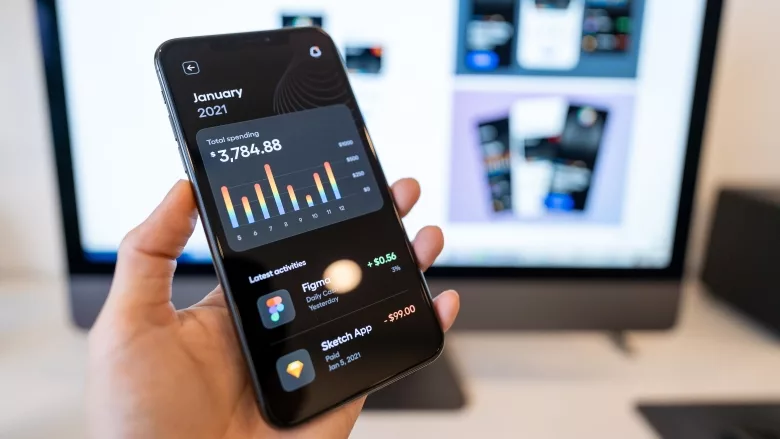Securing mobile applications with blockchain technology

Mobile apps are revolutionizing the finance industry and propelling the move towards an era fueled by convenience and widespread accessibility. Digital transactions through mobile apps are already a pervasive reality.
In the recent mobile banking study, 89% of the survey respondents said that they already use mobile banking. The figures go even higher in the case of millennials, where 97% indicated using the same.
As financial transactions move towards mobile applications, security still remains a pervasive concern for users and companies alike. The sensitive nature of financial transactions and the threat of possible negative ramifications has resulted in some users remaining skeptical of technology in the financial domain.
Security advantages of blockchain
Blockchain technology has the potential to drive significant advancement in the world of mobile finance. The technology is equipped to address the fundamental issues regarding financial inclusion, costs and security.
Blockchain has the potential to take mobile apps to the next level of security and accountability, which is of crucial importance in industries like finance technology (fintech) and healthcare.
It is a technology that has the power to disrupt institutions ranging from banks to insurance providers and credit unions. Adopting blockchain would not only help businesses retain the competitive advantage, but would also give them an upper hand by adding a layer of security to their mobile apps.
Security leaders can bolster their mobile app security with the technology due to these cybersecurity advantages:
Decentralization
The decentralized architecture of blockchain presents several advantages for mobile apps. It doesn’t have a single point of failure in the system, so any malfunction occurring at the top of the hierarchy poses no negative ramifications to the system itself.
The client-server model in decentralized apps is completely distributed. Information and protocols stored on blockchain are encrypted. The apps are usually open-source, with tokens issued for the network users as rewards. The overall network governance is undertaken by an algorithm.
Mobile apps use a conventional user and server-side system where the phone and mobile app act as the user and the central server distributes data upon request. With multiple users trying to access the data wirelessly, some of the information is prone to be lost.
With decentralization as a result of blockchain adoption, advanced storage and data streaming capacities flow into mobile applications, which presents more opportunities for security leaders.
Data transparency
In the case of blockchain, data is recorded in a manner that can be easily tracked by its users. This makes it impossible to falsify information or create fake transactions, aiding security leaders in their loss and fraud prevention efforts. This renders the system completely impervious to any kind of tampering, which is of crucial importance, especially in the case of mobile banking.
In a blockchain ledger, categorization and storage of information can be tracked, verified and secured all at once. As more entries are made, the blockchain expands and more information is automatically added to the system. With complete user authority, blockchain presents a very strong check and balance system.
Blockchain encryption
Encryption with blockchain technology is so complex that it makes unauthorized access nearly impossible for anyone without a decryption key. This lends itself to any system that requires giving access to multiple users but also needs verification of information that is adjusted.
Challenges in blockchain adoption
- Network limitations: Since blockchain is a network-based technology, assumptions need to be made in regards to the network size, which makes the computation of its return on investment a challenge for the businesses.
- Cost: The blockchain network relies on intense computing power and thus needs a huge amount of electricity that rakes up the underlying costs.
- Speed: Blockchain can be slow when compared to the conventional transaction processing systems that process tens of thousands of transactions per second. This brings its viability for large scale applications a challenge.
- Interoperability: A large number of blockchain networks work in siloes and fail to communicate with other peer-to-peer networks. Lack of standardization hinders interaction between the various networks. The variation in protocols, programming languages and consensus mechanisms make interoperability a challenge in blockchain.
Work is constantly underway to counter these challenges and streamline the development of blockchain applications. Despite the challenges of this technology, the decentralization, encryption and transparency provided by blockchain can serve as an asset to cybersecurity professionals working to secure mobile applications and transactions from fraud and other cybercrime.
The integration of blockchain in the mobile app industry has the potential to transform industries such as banking, finance, insurance and healthcare. We are just witnessing the beginning of the change, and there is still a long way to go.
Looking for a reprint of this article?
From high-res PDFs to custom plaques, order your copy today!







